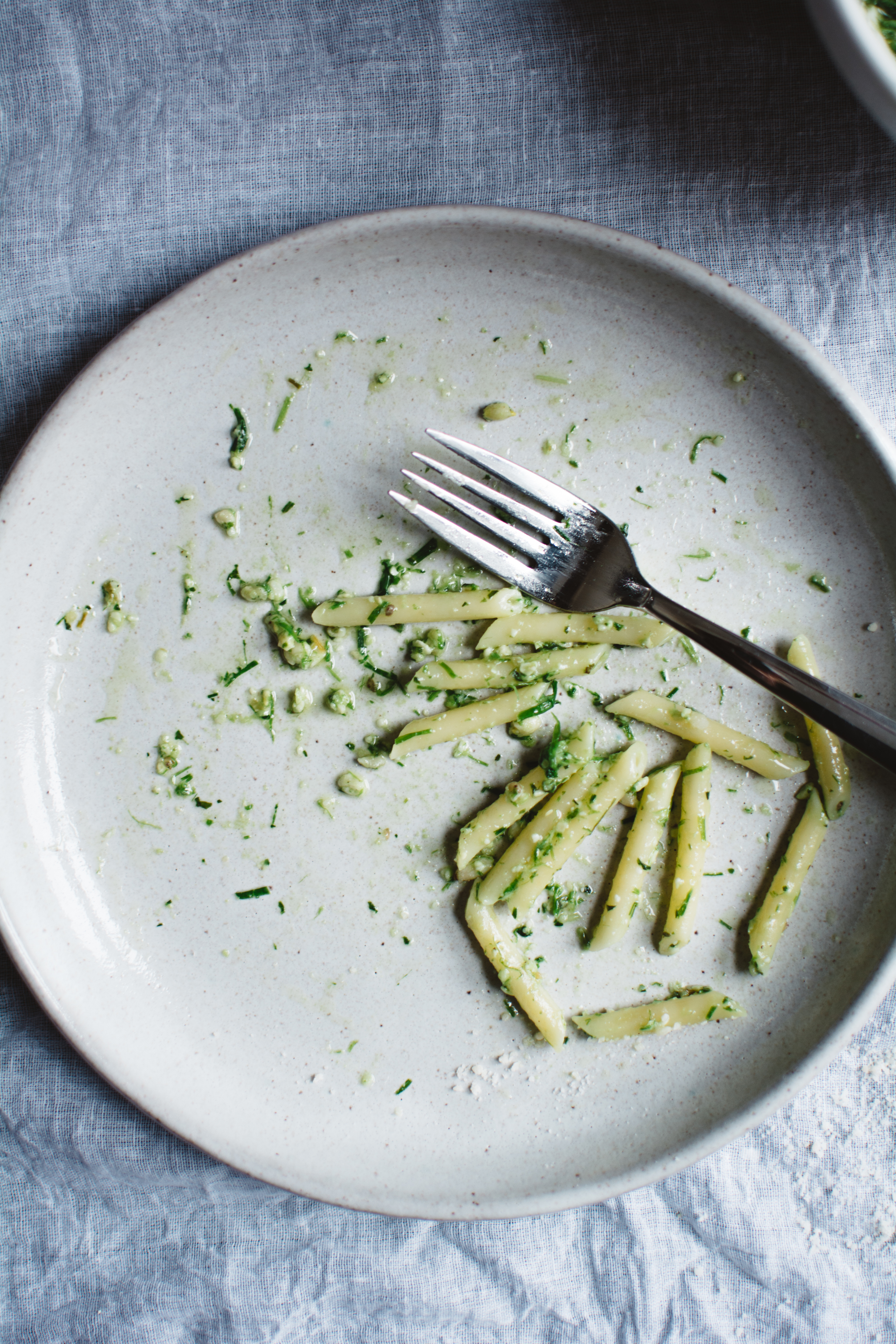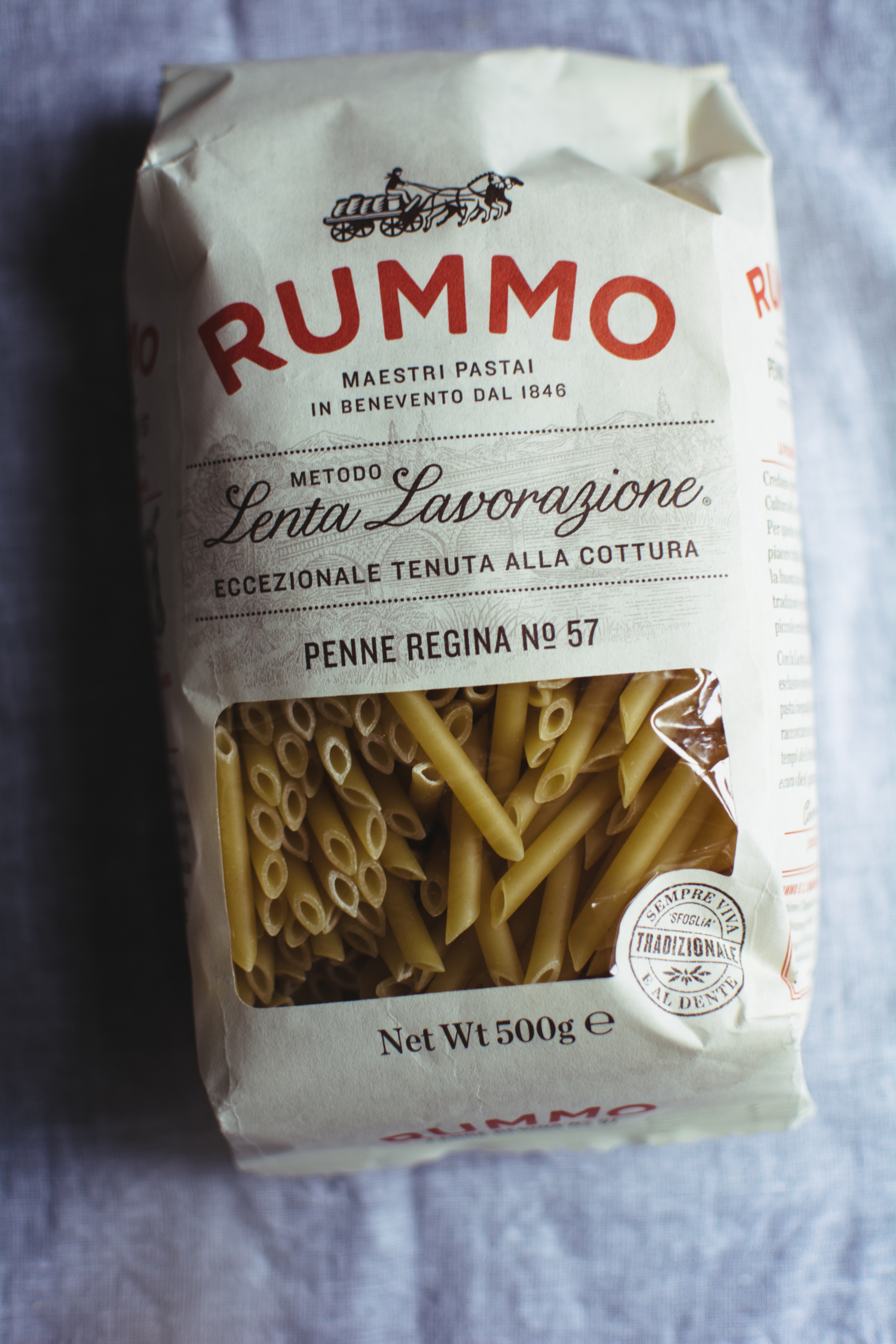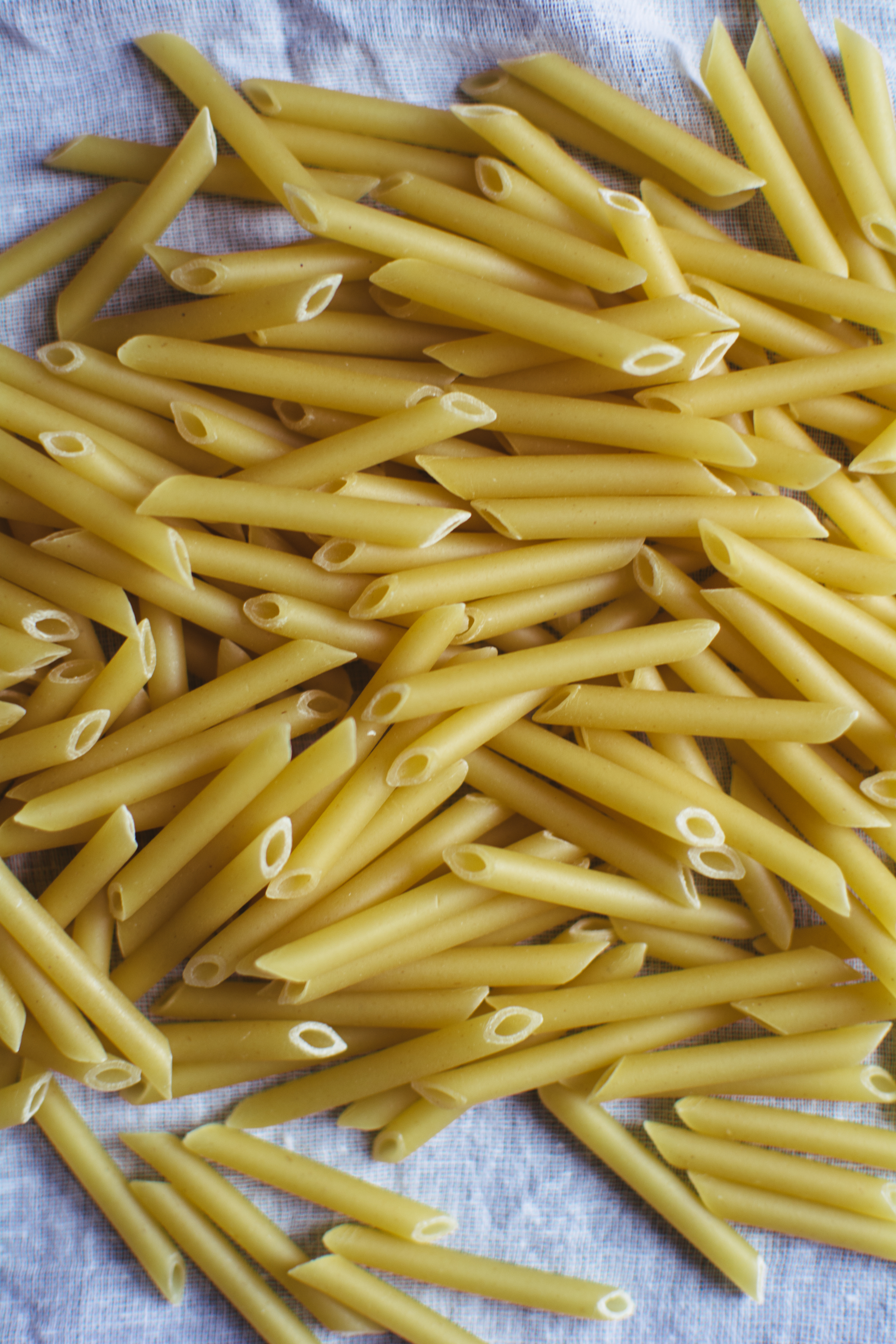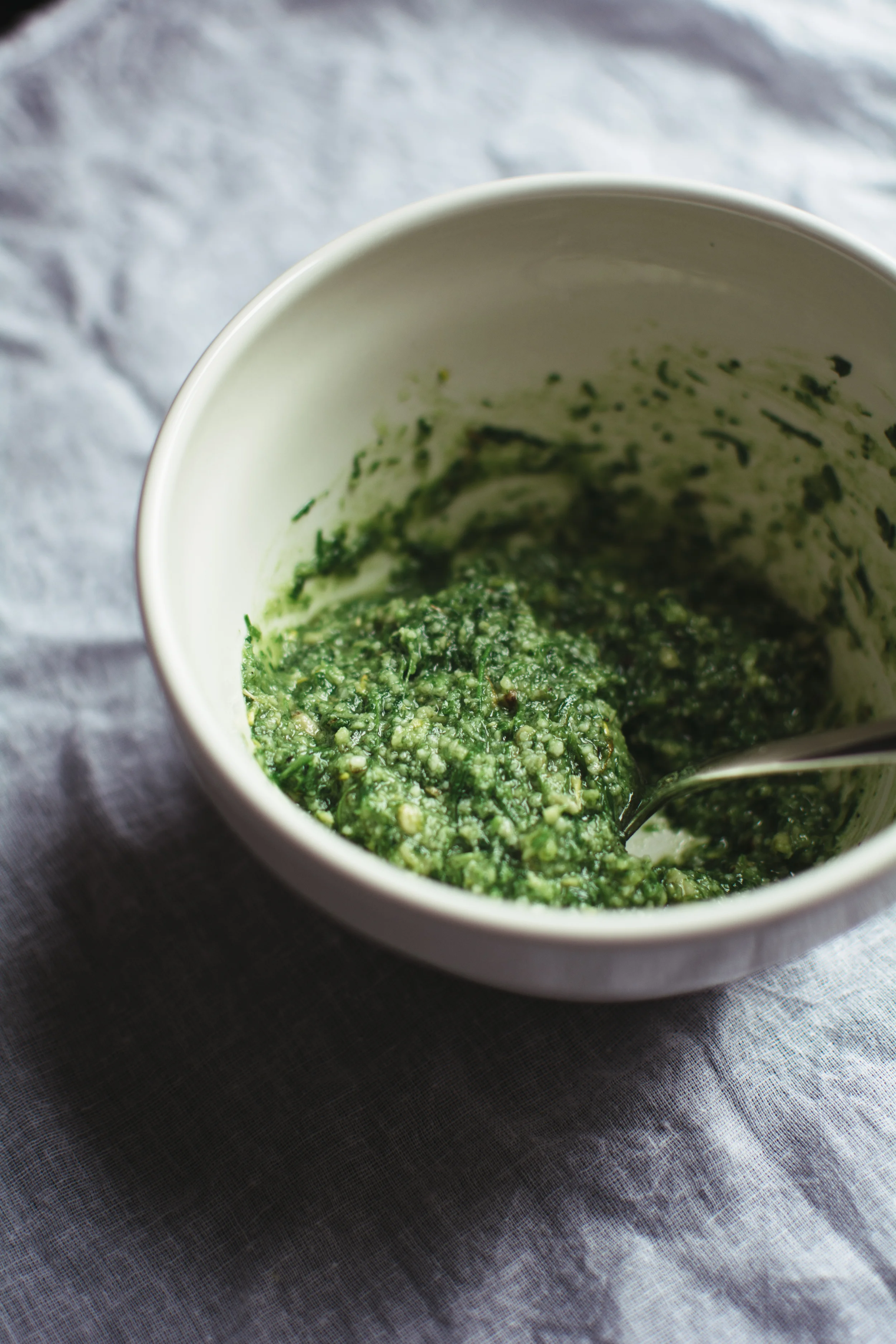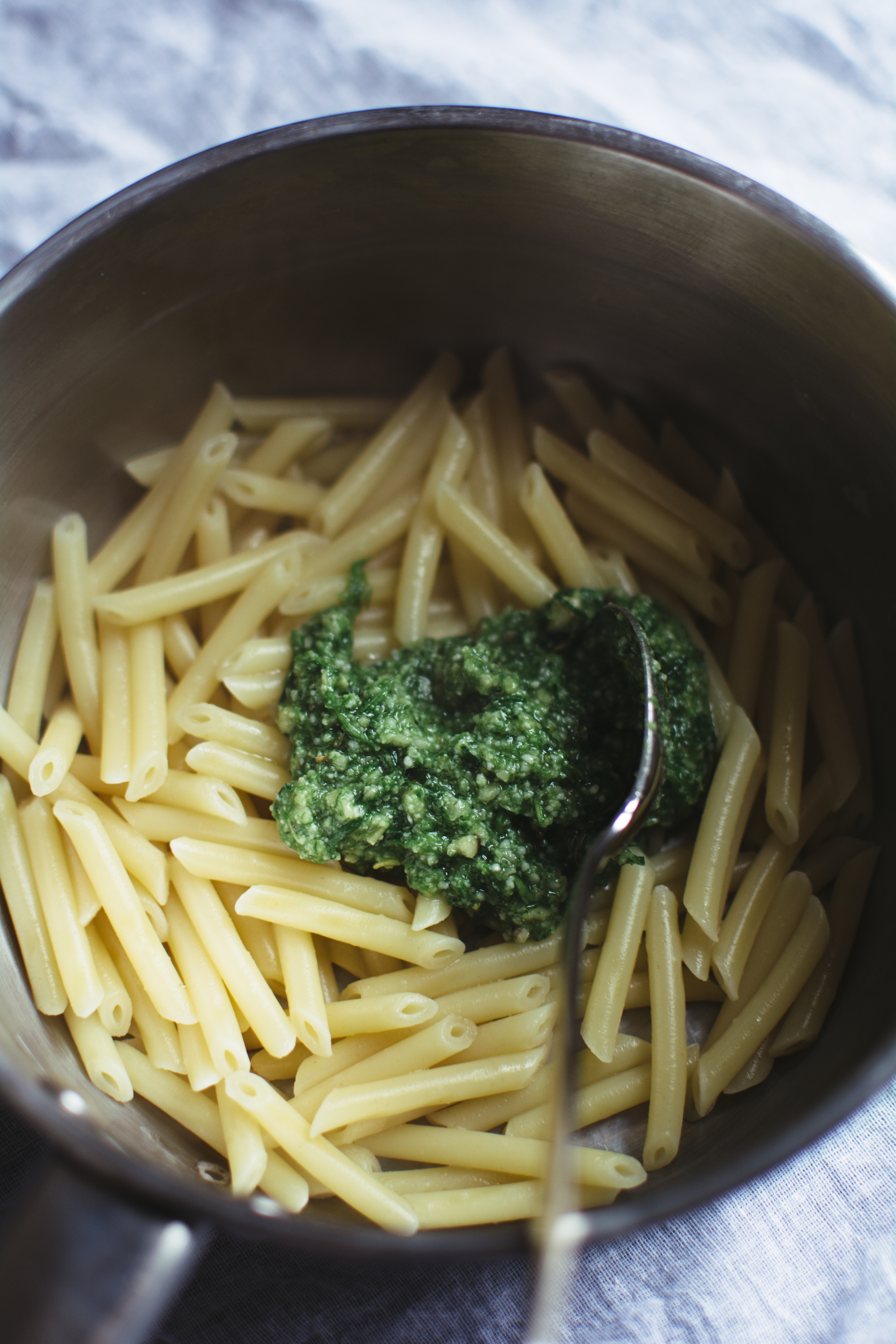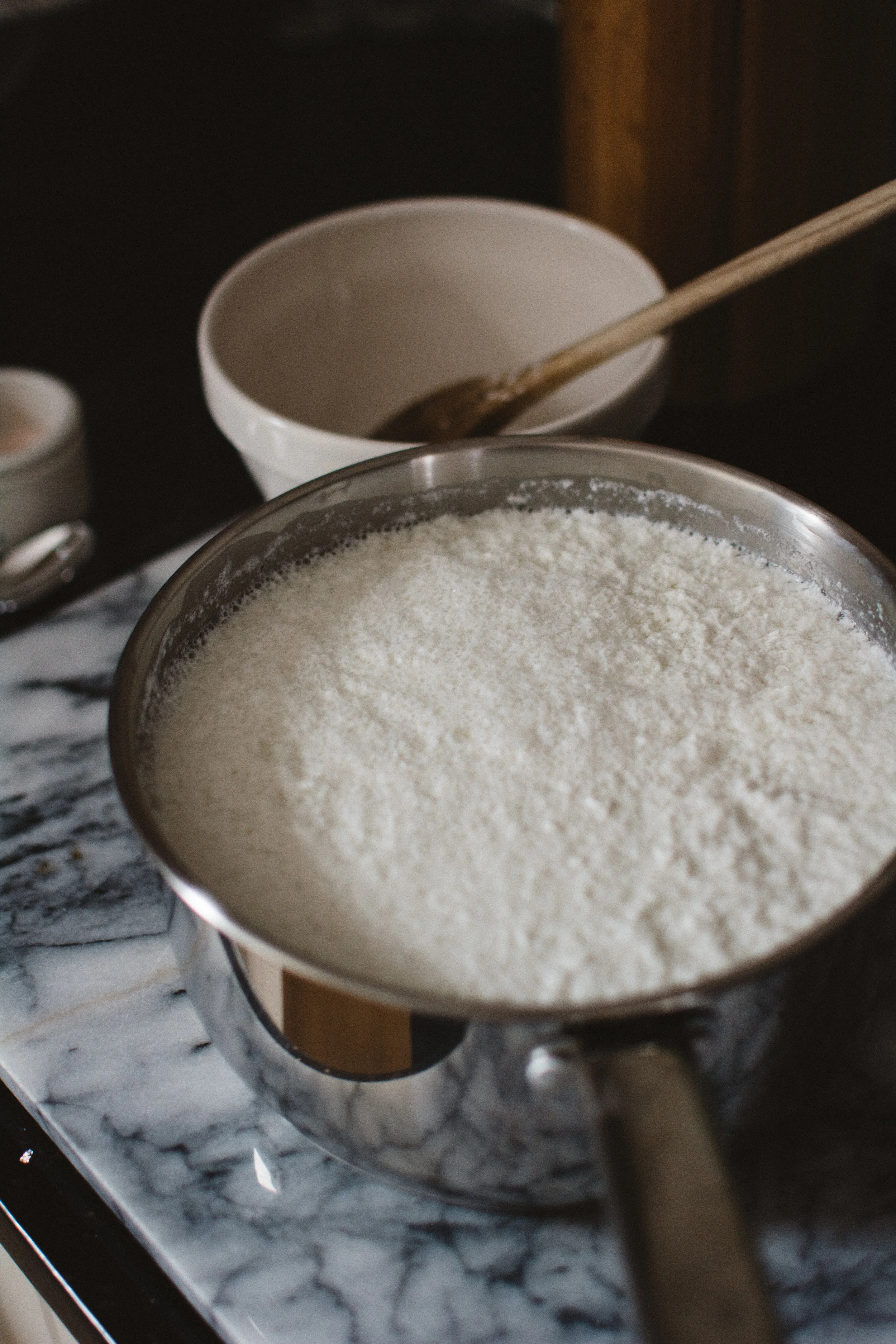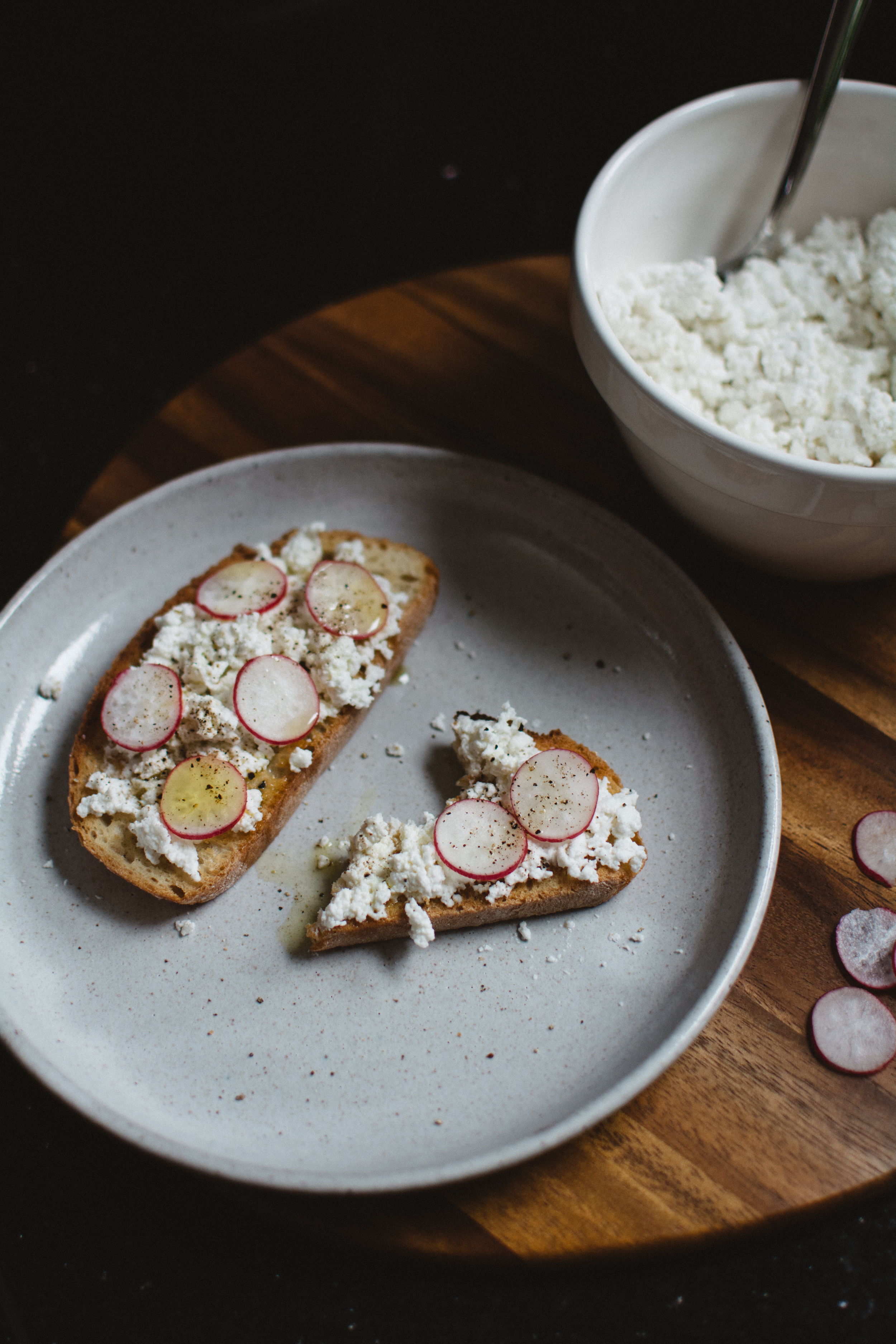Everyone has that one recipe that they go back to time and time again, and for me it's pesto. Perhaps it's the ease in throwing it together, or the fact that its traditional use is with my favourite carb, but there is something about its herby, garlicky notes that keep it firmly on my go-to recipe list.
What I love about pesto is its versatility. Every green herb or leaf that I throw at it seems to work in its own right, with unfamiliar flavour profiles lending themselves to different parts of the palate, adding an element of discovery each time I try a new combination. This particular pesto is made using chives as well as basil, resulting in luxuriously garlicky undertones while keeping it classic. Use it on pasta like I've done here, or dot it onto ricotta on toast - it is all good.
CHIVE + BASIL PESTO
Makes 200g
Ingredients
30g fresh chives
20g fresh basil leaves, stalks discarded
3 tablespoons pine nuts
1 garlic clove, minced
6 tablespoons mild/light olive oil
30g parmigiano reggiano, finely grated
Method
In a food processor, add the herbs, pine nuts, garlic, olive oil and a good pinch of salt and pepper and blend.
Scrape the pesto mixture into a bowl and by hand stir in the grated parmesan. Add an extra glug of olive oil for good measure.
Cook your pasta of choice until al dente (allow 150g per person), reserving a little of the cooking water before draining. Add 1 heaped tablespoon of pesto per person, along with a splash of the reserved water.
Serve immediately.


